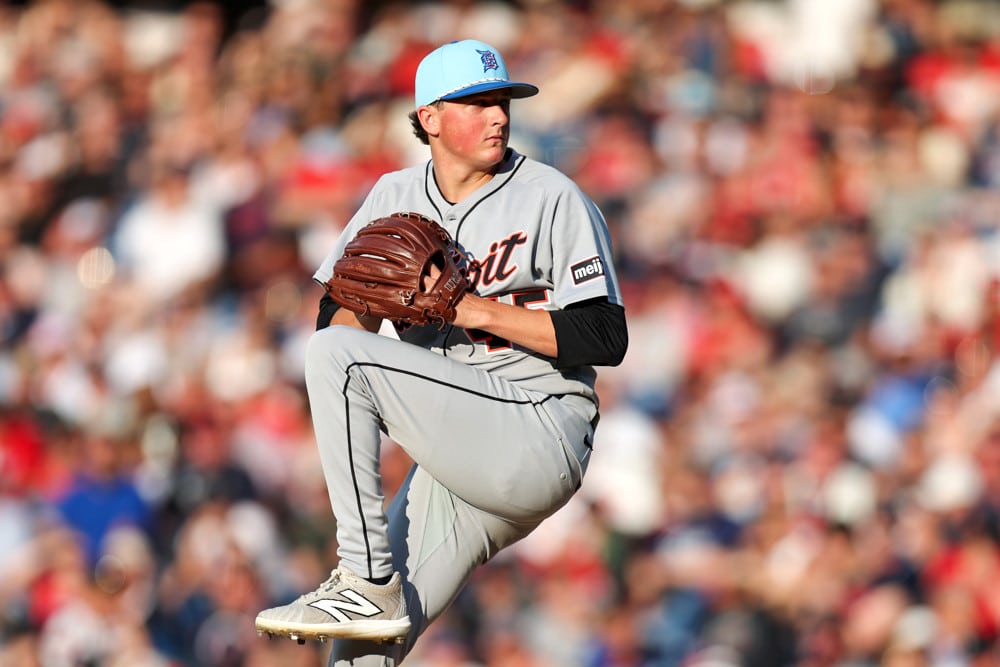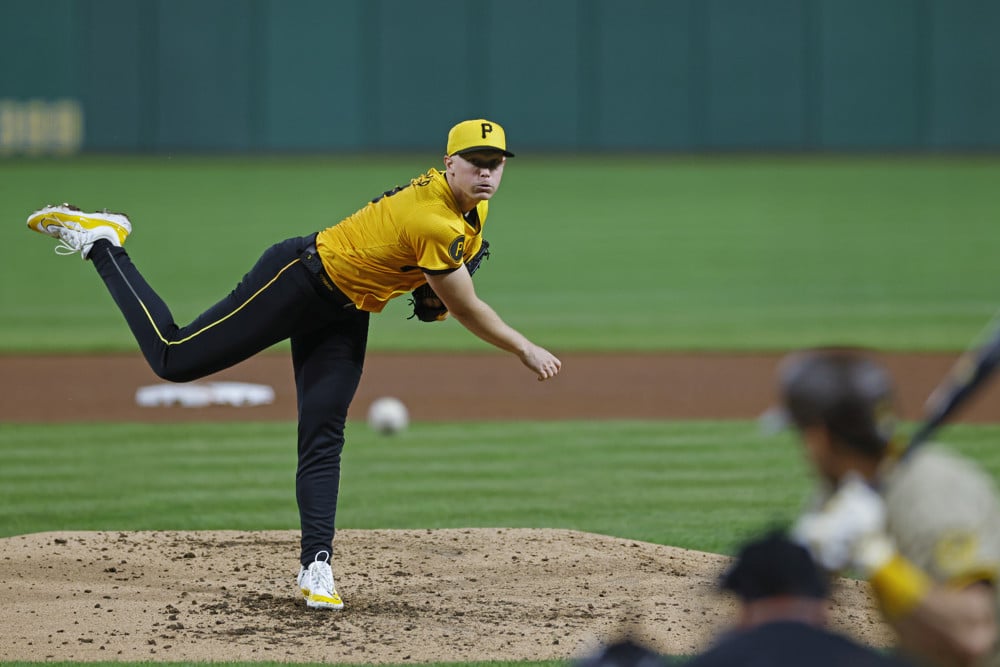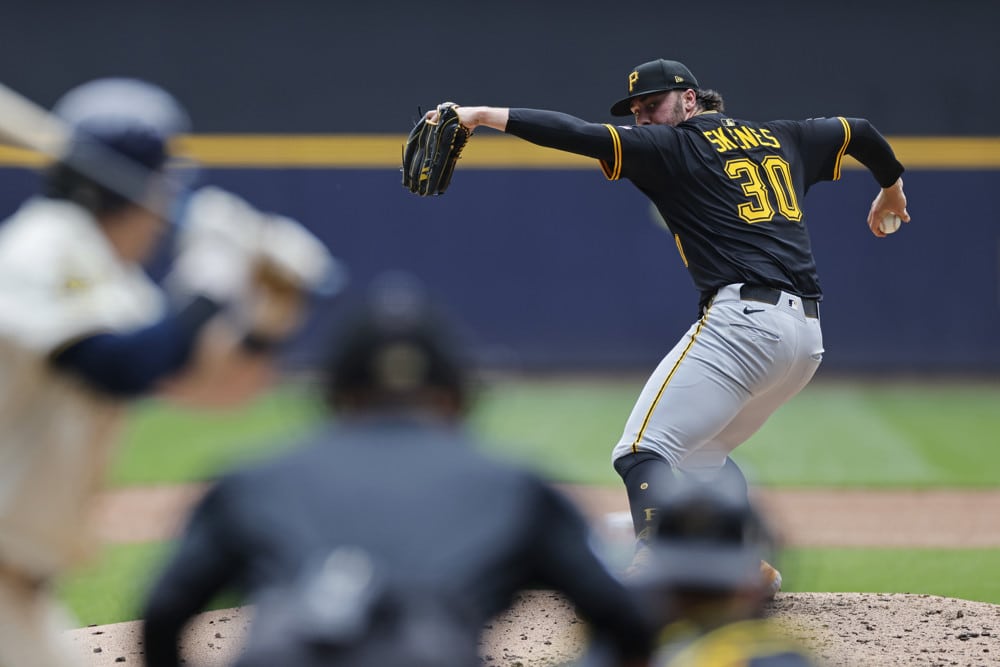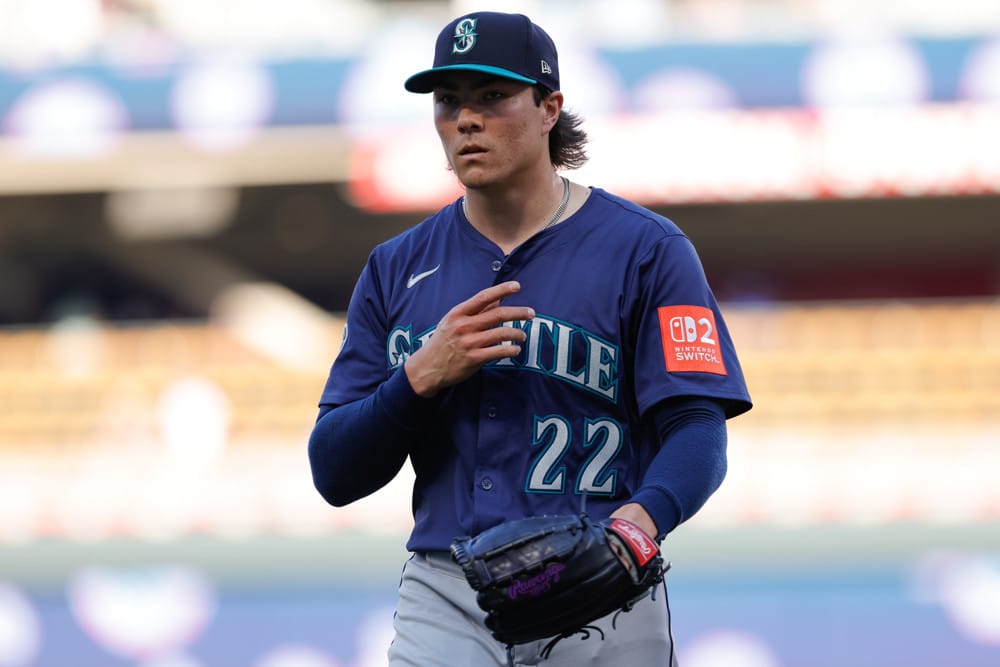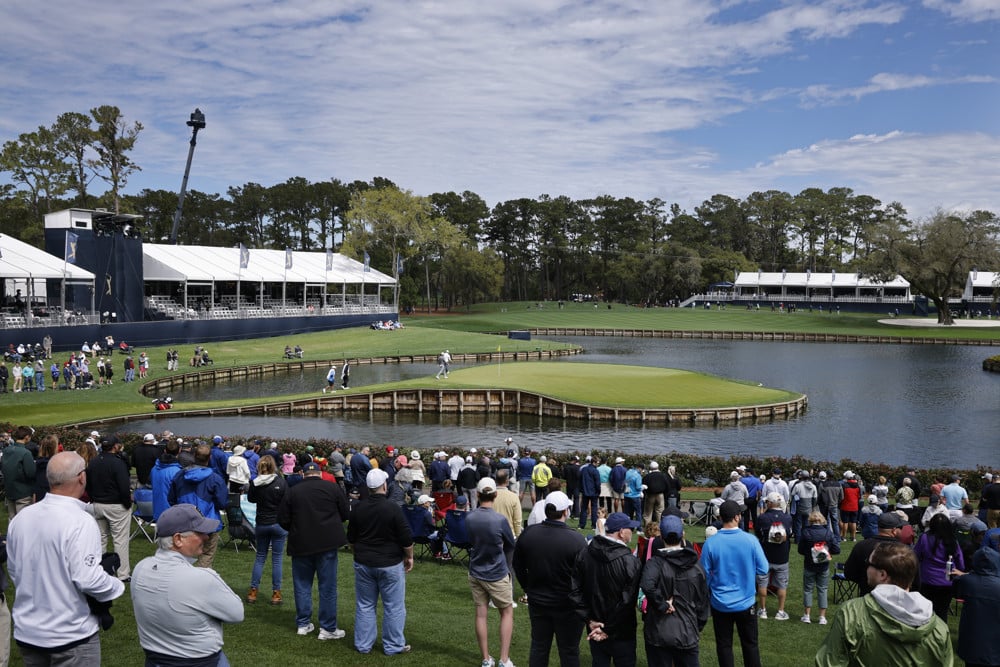
This week, the strongest field in golf vies for the PGA Tour’s most coveted prize. It’s the 2023 PLAYERS Championship at TPC Sawgrass in Ponte Vedra, FL. As always, here is your early deep dive and preview of the 2023 PLAYERS Championship.
2023 PLAYERS Championship Preview – The Golf Course
The late Pete and Alice Dye have created some of the most iconic golf courses in the world. The PLAYERS Championship at TPC Sawgrass is their crown jewel achievement. The golf course opened in 1980 after then PGA Tour commissioner Deane Berman sought to find a permanent home for a new illustrious event. Berman hoped the creation of the PLAYERS Championship would someday rival that of the other four majors.
After several Jacksonville clubs rebuked his offer, Berman built his own course for his ideal tournament. He purchased 415 acres of wooded swampland from two prominent landowners in Ponte Vedra for $1. He then hired Pete and Alice Dye to fulfill his dream of creating a challenging and iconic golf course that could deliver drama and provide spectators with a stadium-like atmosphere to enjoy the proceedings.
And with that, the Stadium Course at TPC Sawgrass was born:
The video above is a fantastic hole-by-hole narrative of how TPC Sawgrass torments players every single year. It is the quintessential target golf course. And there are landmines everywhere. Every bunker, mogul mound, water hazard, tree, and bush were strategically laid out around the golf course for a specific purpose.
What makes TPC Sawgrass so challenging, however, is the absolute necessity to hit small targets by shaping the ball both ways, often on the same hole. Here are a few holes at TPC Sawgrass that demonstrate this:
1st Hole
Players are tasked with hitting a left-to-right tee shot that gets as close to the right fairway bunker as possible. This will then allow a player to hit a right-to-left approach shot to access most pin locations.
10th Hole
This hole is similar in yardage to the 1st. But it asks a completely different question. Can you hit a right to left tee-shot to as close to the left-side bunker as possible? And then can you then hit a left-to-right approach shot into the green to access most pin locations? If so, birdie is in play. If not, walking away from the 10th with a bogey is very likely.
16th Hole
This Par 5 demonstrates both the command to hit the ball both ways, while also showing the fine line between a perfectly executed shot and one that ends in disaster.
The optimal tee shot is a hard right-to-left shot (or a duck hook) and sends the ball as far left as possible while still keeping it in the fairway. However, a tee shot too far left will find itself in jail in the trees. This nearly sunk Cam Smith’s PLAYERS Championship last year when he hit a duck hook deep into the forest on the left.
Next, players must hit a little peeler left-to-right to access most pin locations on the 16th green. However, players who overcook it a little too much will find themselves in the lake. The benefit of making this mistake from the left side of the fairway means either players will drop closer to the green or on the fringe. Par is still in play. But anyone who does this from the right side of the fairway will probably have to try and get up and down for par from 125+ yards away.
Here are a few other videos of TPC Sawgrass from No Laying Up, who did a series of videos showcasing what it is like to play the golf course.
Since last year, there have been some slight changes to the golf course, primarily in areas off the fairway. A few fairway bunkers have seen their faces made a little steeper. Some mogul mounds have also been made a little more severe. And Hole No. 1 added three small pot bunkers around the green. Per Jeff Plotts, tournament director, the goal was to “put back some of the Pete Dye flair that may have softened over time”.
2023 PLAYERS Championship Preview – Betting Strategies
Here are the major stats and facts about TPC Sawgrass to keep in mind this week. This will help preview the types of players and statistics to focus on for the 2023 PLAYERS Championship.
TPC Sawgrass Yardage
The yardage for TPC Sawgrass varies based on weather conditions from year to year. At its maximum, it can play as long as 7,300 yards. In the last few years, however, TPC Sawgrass has played between 7,040 and 7,090 yards round to round. The tournament has been pretty flexible in adjusting the tee boxes used based on wind conditions and the types of shots it wants to encourage players to hit in the tournament.
Here’s a breakdown of all the types of holes at TPC Sawgrass:
Par 3’s
Last year, the Par 3’s played at the following distances each round:
Hole No. 3: 186, 167, 165, 185
Hole No. 8: 207, 204, 219, 231
Hole No. 13: 182, 185, 175, 152
Hole No. 17: 146, 136, 123, 135
The tournament is most flexible with the yardage on Holes 3 and 13. It also seems like the tournament moved the field up a tee box on the 13th to help players have a better chance of making birdie and add drama down the back nine. The traditional Sunday pin is like that at the 16th of Augusta and sits in a little bowl. Players can sling a tee shot right to left and funnel the ball close to the hole for a kick-in birdie.
Historically, the field average score on the Par 3’s at TPC Sawgrass is +0.15. Of all golf courses with at least five tournaments since 2015, they are the sixth toughest on the PGA Tour. Between tricky bunkers, pestering mounds diabolical pin placements, and water, they’re very tough if one misses a green on them.
Par 4’s
Here are the yardage ranges of the Par 4’s at TPC Sawgrass from the 2022 PLAYERS Championship:
< 350 Yards: 5%
350-400 Yards: 25%
400-450 Yards: 40%
450-500 Yards: 30%
Collectively, the Par 4’s averaged approximately 423 yards in length. And only one Par 4 the entire tournament played longer than 475 yards. Overall, TPC Sawgrass offers a wide variety of Par 4’s without any of them being overbearingly long or drivable short.
Historically, the field average score on the Par 4’s at TPC Sawgrass is +0.13. Of all golf courses with at least five tournaments since 2015, the Par 4’s play as the fifth toughest on the PGA Tour. The ease and difficulty, however, depend on the weather. Last year, the Par 4’s collectively were some of the toughest on the PGA Tour. In other years in which conditions are benign however, they played only a little above PGA Tour difficulty.
Regardless of the weather, however, they’re tough. Several tee shots are incredibly awkward. They also require players to hit the ball with a different shot shape into the green than what they hit with their tee shot. And Pete Dye was a mastermind with the subtle ways he’d punish a player by missing a green It is important to stay patient, plod around, and choose perfectly when to be aggressive and when to be conservative.
Par 5’s
The Par 5’s played at the following distances each round at the 2022 PLAYERS Championship:
Hole No. 2: 527, 536, 533, 538
Hole No. 9: 570, 577, 574, 586
Hole No. 11: 557, 547, 532, 540
Hole No. 16: 506, 532, 522, 521
Collectively, the Par 5’s at TPC Sawgrass averaged 544 yards in length. This is fairly short for PGA Tour standards.
However, don’t be fooled by their short length. They’re certainly not automatic birdie holes and trouble lurks everywhere. There’s water looming on Holes 9, 11, and 16. And finding yourself out of position on any of these holes takes going for the green in two out of the equation.
Historically, the field average score on the Par 5’s at TPC Sawgrass is -0.31. Of all golf courses with at least five tournaments since 2015, they are the 13th toughest on the PGA Tour. As a comparison, Bay Hill’s Par 5’s collectively are the 14th toughest. While obtaining birdie or better is very doable, players can easily screw it up.
Agronomy
Before 2019 when the tournament was played in May, the golf course remained in its natural Bermuda state. But with the shift to March and the desire to present TPC Sawgrass as more like Augusta National, not only has the golf course undergone a stark visual change but a significant agronomy change as well.
In March, the golf course is overseeded wall-to-wall with cool tolerant northern strains of grass. The fairways and rough are overseeded with ryegrass. The rough is cut to be 2.5″ in height. And the naturally TifEagle Bermuda greens are overseeded with a combination of a poa trivialis and bentgrass mix. This change in agronomy will make the ball roll differently than it would on a Bermuda green.
Here is a list of golf courses on the PGA Tour that annually feature overseeded greens:
TPC Scottsdale
PGA West – Stadium Course
Innisbrook Resort
Austin Country Club
TPC San Antonio
Harbour Town
TPC Louisiana
Off-the-Tee
As alluded to earlier, TPC Sawgrass isn’t a driver-heavy golf course. Historically, the average driving distance on all Par 4’s and 5’s is only 280.4 yards. Of all golf courses with at least five tournaments since 2015, that’s the ninth shortest driving average on the PGA Tour. The design of several Par 4’s can handcuff the players and force them to play positional golf.
The historical driving accuracy of the field is 65.1%. Despite several holes forcing players to opt for less-than-driver, that’s not a very high driving accuracy rate overall. TPC Sawgrass is pretty narrow, with fairways averaging just a little over 30 yards in width. And the tee shots can be awkward. Almost all holes feature bunkers and water hazards that pinch in on the optimal landing zones. It may not be visually appealing off the tee for some players.
These are some of the reasons why, of all golf courses with at least five tournaments since 2015, TPC Sawgrass ranks as the sixth toughest off-the-tee. And in windy conditions (like there were the last two years), it’s an absolute brute to try and put balls in the correct placement on the hole.
TPC Sawgrass is also one of the more punishing places to miss a fairway. Not necessarily because of penal rough, but how one’s score on the hole can change based on being out of position. In addition, there are several opportunities to rack up penalty strokes should one miss a fairway.
The average difference in total score on a hole for those who miss a fairway since 2015 is 0.42 strokes higher than those who hit the fairway. Of all golf courses with at least five tournaments since 2015, this is the fourth biggest difference in score on the PGA Tour. And almost 6% of all tee shots incur a penalty with a missed fairway. That’s the 7th highest rate of courses with at least five tournaments played since 2015.
Approach Play
Like the tee shots, Pete Dye doesn’t cut anyone breaks with the approach shots into greens. They’re very difficult. Of all golf courses with at least five tournaments played since 2015, TPC Sawgrass ranks as the fourth toughest on the PGA Tour for all approach shots.
Why is it so tough? For starters, the targets are so small. The greens only average about 5,500 sq. feet in area and are protected by subtle false fronts and roll-offs to funnel balls into collection areas. There is a very small margin for error to try and keep a ball close to the pin. Though the 63.5% green in regulation rate since 2015 isn’t absurdly low, the overall proximity to the hole at TPC Sawgrass is annually well below PGA Tour average, even from the fairway:
2022: 39′ 0″ Avg. Proximity (36′ 11″ PGA Tour Avg.)
2021: 39′ 10″ Avg. Proximity (37′ 1″ PGA Tour Avg.)
2019: 38′ 11″ Avg. Proximity (36′ 5″ PGA Tour Avg.)
And they’re tough from almost all ranges. Of all golf courses with at least five tournaments played since 2015, TPC Sawgrass features the toughest approach shots from 150 yards or less. And from over 150 yards, TPC Sawgrass features the seventh toughest approach shots.
Some recent changes to TPC Sawgrass has taken water out of play on certain holes with the approach shots. Nevertheless, water presents a greenside threat on eight holes at TPC Sawgrass, including the final three holes of the back nine. Overall, TPC Sawgrass features the seventh-highest rate of penalties incurred of all golf courses played on the PGA Tour since 2015.
Lastly, here is the approach shot distribution chart per DataGolf from the 2022 PLAYERS Championship. This will preview what types of approach shots players will hit at the 2023 PLAYERS Championship.
This chart shows why TPC Sawgrass is one of the greatest golf courses in the United States. There isn’t a significant concentration of approach shots from any particular range. This also helps explain why there are so many different types of golfers who can find success at TPC Sawgrass. It doesn’t favor one style of play.
It also should be noted that the approach shot distribution fluctuates year to year based on weather conditions. Last year, there was a slightly higher amount of approach shots from 175-200 than PGA Tour average. In 2021, however, there were higher rates from 125-175 and significantly less than average between 175-200. The buckets can vary year to year based on the conditions at TPC Sawgrass
In any event, focusing on performance between 125-200 is a gambler’s best bet. This covers three of four of the Par 3’s and most of the difficult and awkward Par 4 approach shots at TPC Sawgrass. It also seems to be players who excel with their short to middle irons, who tend to fare best at TPC Sawgrass.
Around The Green
Pete Dye is known for subtly punishing players with annoying and triggering greenside features. TPC Sawgrass is his masterpiece. The greenside surrounds are littered with mounds, collection areas, and bunkers both big and hula-hoop small. Every hazard around the greens at TPC Sawgrass has been placed there for a reason. It’s to inflict the maximum amount of punishment and pain for an errant approach shot.
And this difficulty shows up in the statistics. Of all golf courses with at least five tournaments since 2015, TPC Sawgrass ranks as the sixth toughest around the green. Not only do they give the amateurs who play TPC Sawgrass a proper punch in the face, but the best players in the world also struggle to get up and down from off the green as well.
Of all golf courses with at least five tournaments since 2015, TPC Sawgrass ranks as the fifth most difficult from the fairway to get up and down. However, it’s played a little easier the last three tournaments than it had before. This might have to do with the rye overseed making turf conditions a little easier to chip and putt from off the green than the Bermuda did. Conditions were also a little softer in 2019 and 2022.
Of all golf courses with at least five tournaments since 2015, TPC Sawgrass ranks as the fifth most difficult from the rough to get up and down. However, it’s played a lot more difficult in the last three tournaments than it had before. Again, this might be due to the rye overseed. While the ball can sit up nicely on it, the rye overseed can be pretty sticky and impede proper ball and clubface contact. The switch to a March date with more wind also might be a factor.
Lastly, of all golf courses with at least five tournaments since 2015, TPC Sawgrass ranks as the sixth toughest from greenside bunkers to get up and down. Over the last few years, however, it hasn’t been quite as difficult getting up and down from the bunkers as it has in the past. It possibly could be differences in how the ball interacts with the overseeded greens versus the Bermuda greens pre-2019. Conditions were also a little softer in 2019 and 2022.
Putting
Of all golf courses with at least five tournaments since 2015, TPC Sawgrass ranks as the seventh toughest greens to putt on. However, there is a significant gap between the difficulty in putting at TPC Sawgrass and the most difficult greens at places like Riviera, Pebble Beach, Augusta National and Torrey Pines. The overall difficulty is much closer to the PGA Tour mean than other tougher venues.
It appears that the switch to March and a change in agronomy might have made putting a little tougher at TPC Sawgrass. Players are overall losing slightly more strokes per putt on the overseeded greens the last three years than they had on Bermuda from 2015-2018. This is especially evident on putts less than fifteen feet. Players aren’t gaining nearly as many strokes on putts less than 15 feet on the overseeded surfaces than they were when it was Bermuda.
This is surprising given how difficult some players find it to putt on Bermuda. And players comment on other venues how truer the ball rolls on an overseeded green. The difference might have to do with colder and windier conditions seen in March as opposed to the May PLAYERS Championship date. The elements might be giving players more fits than the grass itself.
One thing that has been consistent, however, is the difficulty of putts more than 15 feet. This is constant both with overseed and Bermuda. Of all golf courses with at least five tournaments since 2015, TPC Sawgrass ranks as the fifth toughest on putts more than 15 feet. Only Augusta National, Quail Hollow, Sedgefield Country Club, and Kapalua have ranked tougher.
Like the areas around the green, Pete Dye designed the greens to make it more difficult to putt from an approach shot that doesn’t find the proper tier. Putting up or down the ridges and slopes to the pin from an inconvenient spot on the green is very difficult.
Next in the 2023 PLAYERS Championship preview here is a chart from DataGolf of how golfers are able to separate themselves from the field in each major strokes gained category. This chart identifies the variance in which a player’s total strokes gained per round is attributed to their performance off-the-tee, with their irons, around the green, and with their putter:
Historically, one’s performance with ball striking contributed more towards one’s total strokes gained for the tournament. Translation – the better you struck the ball off-the-tee and with the irons, the greater the chance you could separate yourself from the pack than you could with a hot putter or great short game. And vice-versa.
This was not the case in 2022 though. While one’s performance off-the-tee remained a big factor in determining your fate in the tournament, putting performance weighed much more heavily in the variance in total strokes gained in the field than it would historically.
This is probably attributed to the difficult weather conditions seen during the tournament. In addition, the greens were pretty soft due to the heavy rain TPC Sawgrass received. This is in contrast to tournament conditions seen in 2021. That year, it was firm and very windy. In 2021, players’ scores were more in line with total ball striking having a bigger influence over total strokes gained than performance on and around the green did.
As such, monitor the weather this week to determine what attributes might allow a golfer to separate (or punish) themselves from the field. Firm, windy, and warmer conditions (like in 2021 and 2017) generally have placed a bigger importance on ball-striking. Soft and cooler conditions (like in 2019 and 2022) shifted some more emphasis away from ball-striking and towards putting and scrambling.
Next, here is the skillset chart per DataGolf that identifies a correlation (or lack of correlation) in various skillsets towards success at TPC Sawgrass. This is a preview of what types of golfers to target at the 2023 PLAYERS Championship:
Unfortunately, TPC Sawgrass is one of the least correlated golf courses in terms of favoring skillsets on the entire PGA Tour. There is below average correlation in terms of driving distance, iron play, around the green, and putting in a player’s profile. The only constant seems to be that players who have strengths in driving accuracy tend to fare better at TPC Sawgrass than those who don’t.
This speaks volumes to two points. First, TPC Sawgrass doesn’t favor one style of play. Players from any walks of life can show up to the first tee and have a great finish. Long hitters. Short hitters. Great ball strikers but bad putters. Excellent scramblers and putters but mediocre ball strikers. One can find success with the skills they’re good at. And as long as they can minimize the damage their weaknesses inflict, they can have a good finish.
The randomness also speaks to how TPC Sawgrass can weed out pretenders quickly. Sawgrass punishes those who aren’t on top of their game. Mistakes can compound in a hurry. There’s no faking it around TPC Sawgrass. Anyone who shows up with either major red flags in their arsenal, or isn’t sharp in areas they typically excel at, will get ejected very, very quickly.
Overall, though, it seems like excellent ball strikers who aren’t overly reliant on distance to gain strokes on the field is the preferred profile at TPC Sawgrass. Here are players in the field next week who have gained the most strokes per round in their career at TPC Sawgrass (minimum of eight rounds):
- Doug Ghim – +1.7 (8 rounds)
- Justin Thomas – +1.6 (27 rounds)
- Tommy Fleetwood – +1.6 (18 rounds)
- Si Woo Kim – +1.5 (20 rounds)
- Will Zalatoris – +1.5 (8 rounds)
- Corey Conners – +1.5 (12 rounds)
- Hideki Matsuyama – +1.4 (24 rounds)
- Joel Dahmen – +1.3 (10 rounds)
- Jason Day – +1.2 (36 rounds)
- Adam Scott – +1.1 (50 rounds)
This list is a good representation of what types of players do well at TPC Sawgrass. Almost all of them are excellent ball strikers. None of them are overly reliant on using distance to overpower a golf course. Target players with a similar profile as these golfers.
Follow the tips in this preview, and you should be able to put together a solid DFS lineup or betting card for the 2023 PLAYERS Championship.












